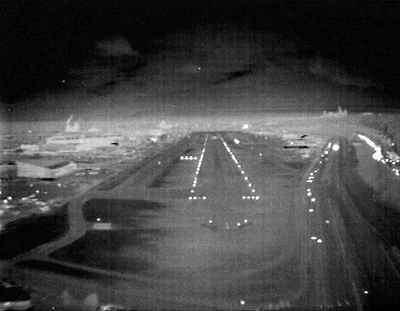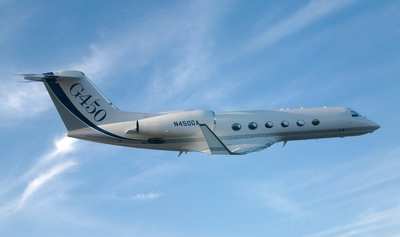Thu, Oct 13, 2011
Company Was First OEM To Certify Enhanced Flight Vision
System
Gulfstream recently recognized the 10th anniversary of
certifying business aviation’s first Enhanced Flight Vision
System (EFVS), which was certified by the FAA on a Gulfstream V, on
Sept. 14, 2001. The certification sparked more than a decade of
avionics advancements for the company, including becoming the first
original equipment manufacturer (OEM) to take operational credit
for EFVS in April 2004, the first Part 25 OEM to certify a
synthetic vision system in 2007, the first OEM to provide its
customers with both enhanced and synthetic vision systems in 2008
and the first company to receive an FAA-issued aircraft model type
certificate that included an enhanced vision system as standard
equipment.
Enhanced Vision File Photo

Gulfstream says that tradition of developing cutting-edge
avionics advancements continues at the company’s Center of
Excellence for Advanced Vision Systems in Savannah. For example, as
part of its ongoing research and development efforts in avionics,
the company has equipped a test aircraft with two enhanced flight
vision systems. The move is a first for a business-aviation OEM,
enabling Gulfstream’s engineers to conduct side-by-side
evaluations of alternative EFVS configurations as they explore the
efficacy of potential enhancements.
“We want to collect data with both alternate
configurations exposed to the same low visibility conditions at the
exact same time,” said Pres Henne, senior vice president,
Programs, Engineering and Test, Gulfstream. “This allows us
to do that. It also reinforces our long-standing commitment to
ensure Gulfstream operators have the best possible equipment
available.”
G450 File Photo

Gulfstream mounted the two systems on a large-cabin, long-range
Gulfstream G450 using a specially designed structure and radome
that housed two forward-looking infrared (FLIR) cameras, one above
the aircraft’s nose and one below it. Video feeds from the
two cameras as well as an eye-normalized camera were fed into a
recording system to preserve the images for later evaluation and
analysis. Feeds from the two cameras were also alternately shown on
the pilot’s head-up display (HUD). The crew flew the aircraft
in day and night conditions under both instrument and visual flight
rules. They also performed approaches in light to medium fog.
“We’ll continue to evaluate the results and use them in
defining requirements for future applications,” Henne
said.
Since the initial certification in 2001, Gulfstream has
installed more than 600 enhanced flight vision systems on its
aircraft. It’s not just customers who have taken notice of
the Gulfstream EFVS. The system has been recognized for its
significant contributions to enhancing aviation safety by the
Federation Aeronautique Internationale and has garnered a Honeywell
Bendix Trophy, a Flight International Aerospace Industry Award and
Flying magazine’s Flying Editor’s Choice Award.
More News
Aero Linx: Model Aeronautical Association of Australia MAAA clubs are about fun flying, camaraderie and community. For over 75 years, the MAAA has been Australia’s largest fl>[...]
Touchdown Zone Lighting Two rows of transverse light bars located symmetrically about the runway centerline normally at 100 foot intervals. The basic system extends 3,000 feet alon>[...]
“Discovery and innovation are central to our mission at Virgin Galactic. We’re excited to build on our successful record of facilitating scientific experiments in subor>[...]
How To Get A Story On Aero-TV News/Feature Programming How do I submit a story idea or lead to Aero-TV? If you would like to submit a story idea or lead, please contact Jim Campbel>[...]
Student Pilot Reported That During Rotation, “All Of A Sudden The Back Of The Plane Kicked To The Right..." Analysis: The student pilot reported that during rotation, “>[...]
 ANN's Daily Aero-Linx (05.02.24)
ANN's Daily Aero-Linx (05.02.24) ANN's Daily Aero-Term (05.02.24): Touchdown Zone Lighting
ANN's Daily Aero-Term (05.02.24): Touchdown Zone Lighting Aero-News: Quote of the Day (05.02.24)
Aero-News: Quote of the Day (05.02.24) ANN FAQ: Contributing To Aero-TV
ANN FAQ: Contributing To Aero-TV NTSB Final Report: Cirrus Design Corp SR20
NTSB Final Report: Cirrus Design Corp SR20




